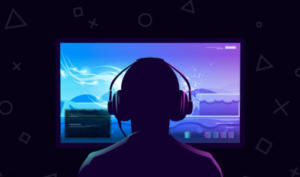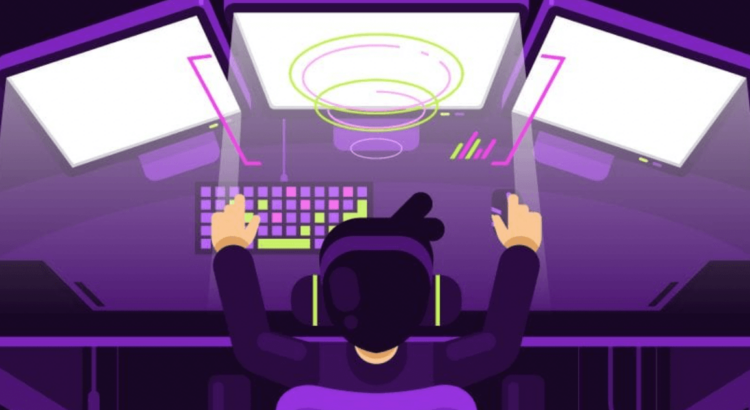Much like visuals, sound design and sound production are a crucial part of the gaming experience. Whether playing on an arcade cabinet or on your laptop — whether online or offline — the sounds you hear will either make or break that particular game.
So how do you ensure that the audio enhances gameplay and not detract from it? After all, there are so many things to consider when it comes to adding sound effects and music to your game: licensing, software, recording equipment, mixing tools, sound libraries and more.
But don’t worry! We’ve got everything you need to know about creating the best soundscape for your game in this blog post.
Create a mood with music
Music is crucial to setting the tone of your game. It can help players feel connected to the content, and make them feel as if they are in an alternate world.
You can use the music to help guide the feeling of the game, making it either more exciting or more relaxed to suit the gameplay experience. For example, sports games will likely have a more energetic and fast-paced tone that suits the gameplay, whereas a game about the Cold War would likely have a slower and more relaxed feel in order to create a more serious environment.
When choosing music for your game, it’s important to think about what emotions you want the player to feel while they’re playing. Think about what kind of music inspires those emotions in you. Then, find music that inspires the same emotions in you and your team members.
When finding the right music, remember that music is an auditory experience that has the power to bring players into another world. Whenever possible, try to use original music in your game, as it will help create an even more immersive environment and mood.
Record great audio
Audio is just as important as visuals when it comes to creating an immersive gaming experience. When designing your audio, it’s important to create a mix that sounds interesting, but also clear and understandable.
After all, a player’s experience will be greatly affected if they can’t understand the narrative or instructions of a game due to poor audio quality. For example, if a player can’t hear their teammate’s voice due to poor audio quality, then they may miss out on critical information that could prevent them from winning. This could lead to frustration, which can negatively impact the player’s experience with your game.
Another thing to remember when designing audio for your game is that it doesn’t always have to be real. In fact, it’s often easier to create interesting sound effects using software rather than recording them in the real world. This is particularly helpful for online games, as it allows you to control the audio and easily update it whenever you want — as opposed to using real audio for which you would have to find new sources if you want to change anything.

In addition to creating real audio, software like GarageBand can help you synthesize unique audio effects that you can use to create the perfect soundscape for your game.
Pick the right sound effects
Sound effects — such as footsteps, gunshots, or the rustling of leaves — help players to engage with the game. They create an immersive experience, and greatly enhance the visuals by adding a sense of realism to the gameplay.
Think about the game you’re creating, and what you want players to feel while they play. Then, try to find sound effects that match the gameplay experience. For example, a racing game will likely have a lot of engine sounds, whereas a stealth game would have quieter, more subtle sound effects.
You don’t have to go out and record your own sound effects — you can use pre-existing sounds from a variety of sound libraries or online sources. Again, GarageBand can be helpful here, as it has a wide variety of sound effects that you can use for your game.
Don’t forget Foley and voices
Foley is used in film to create a realistic soundscape. This can be used in games to help create an immersive audio experience. For example, adding a sound effect for footsteps could really help to bring the game to life and make it feel more realistic.
You can also use Foley to enhance the game’s narrative. For example, you can use Foley to highlight a sound that is important to the game. This could include something like a sword clashing, coins falling, etc.
Foley can also be used to help create the mood in a game. For example, if you are making a scary game, you would want to have more creaks and moans in the Foley sounds.
Foley is a way of creating sound effects that sound like they’re originating from the same source as the visual representation. That way, the sound seems more realistic.
You can also add sound effects for the voices in your game. While it’s possible to use real voices for your game, it’s often easier to use software to synthesize voices that could be relevant to the game.
Mixing: The magic that makes it all come together
Making sure that all the pieces of your sound are properly balanced is crucial to creating an immersive game experience. Being able to properly mix sound effects, Foley, and voiceovers is a skill that takes time to perfect, but is essential in creating a quality game. For example, you may want to create an exciting sequence where the player is running through an explosion.
If you have the explosion sound too loud, then it could overwhelm the other sound effects and make it difficult for the player to hear footsteps or other important sounds that could help them progress through the game.
If you’re using software to mix your audio, it’s important to keep in mind that each sound has a different level of volume. You can use a sound meter to help you make sure everything is properly balanced and the volume levels are consistent.
Conclusion
When you think of video game production, you probably imagine dudes with beards spending hours arguing about what kind of hats characters can wear.
There is a lot more to game production than that, though.
In fact, there are so many aspects to consider when creating a game that it’s easy to get overwhelmed at the prospect of making one from scratch. This post includes some of the considerations you can make when designing your own soundscape for your game.
Creating an excellent soundscape is a crucial element in creating the best game. It can help your player feel more immersed, as well as make them feel scared if it’s meant to be a scary game. Music and sound production are not easy, but with practice and the right information, it becomes easier.
